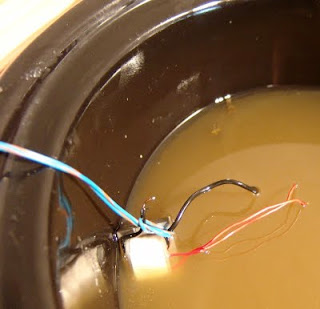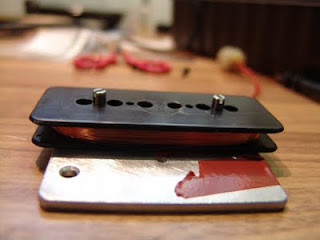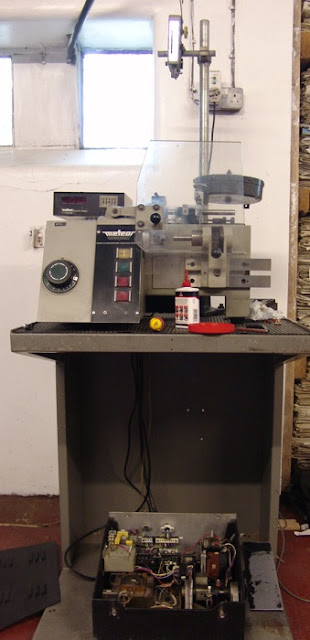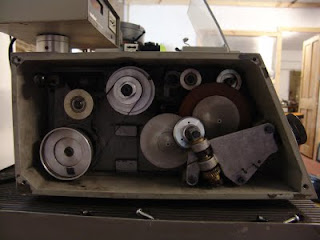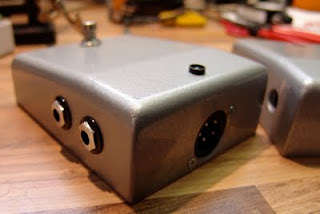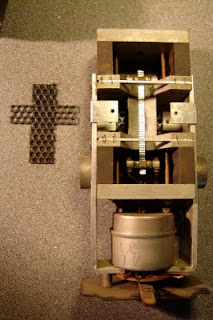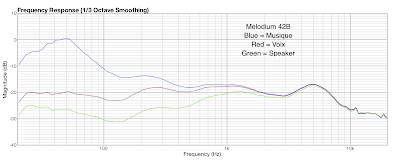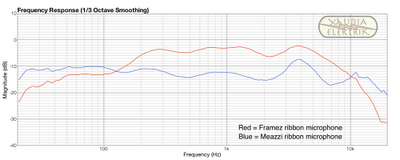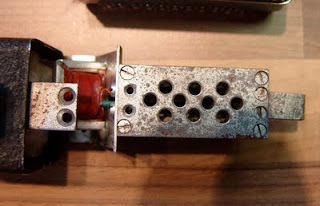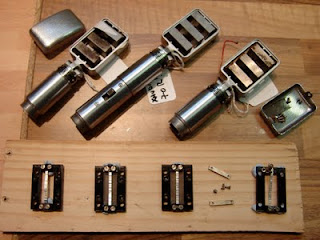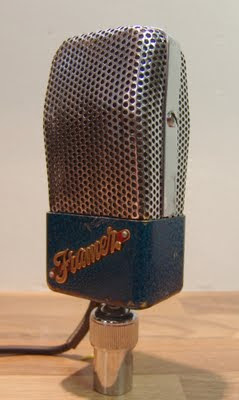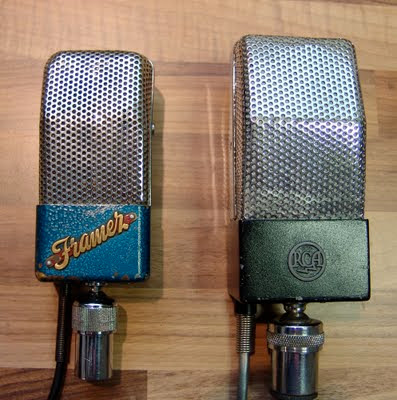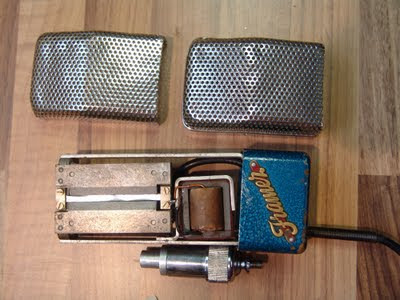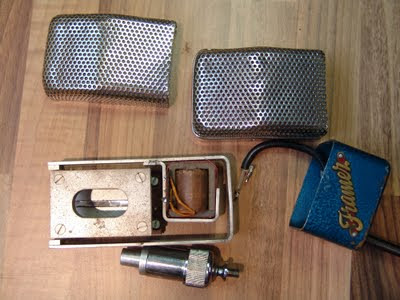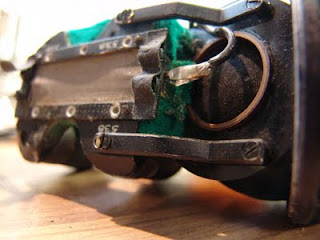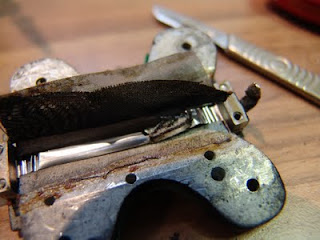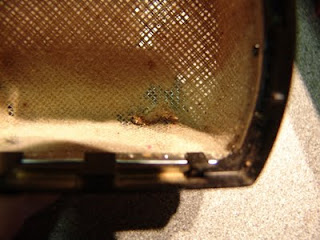Our Microphone of the Month for May is the magnificent Melodium 42B ribbon microphone.
 |
| Evolving Melodium 42b – serial no. in the 1700s, 4300s and 6600s (L to R) |
The Melodium 42B was conceived as a French alternative to the RCA 44 family of microphones, and is in its own way every bit as good as the more celebrated RCA mics. At 32 cm high and 14 cm wide, and weighing 2.65 Kg, the 42b is a huge microphone with a large ribbon (68 mm long by 4.2 mm wide) and big powerful magnets*, to give a strong output with low noise.
We have been lucky enough to have four of these through the workshop, and have had the opportunity to observe some for the finer details that have evolved during the production of these beauties. Over the years the grill of the 42b has been refined, with the holes becoming larger, and a solid unperforated band appearing across the bottom of the microphone. Later microphones have a three pin connector at the rear, whist early models are hard-wired.

The magnet structure has also changed over time – earlier models have U-shaped magnets above and below, whereas the later microphones have four block magnets, arranged in pairs and connected by metal plates to complete the magnetic circuit.
The photo on the left shows the later style of magnets. The transformer and inductor are in the circular metal can below. Some models have a rectangular can, but the transformer and inductor inside are similar, at least in the ones we studied. The transformer has a ratio of 1:14, giving an output impedance of 50 ohms**
There is also a facility to adjust the ribbon tension, which should be mandatory on all ribbon mics!
Here’s a short summary of the changes with serial number:
- 1500 – Small grill holes, fixed cable (no connector), U-magnets with North marked, rectangular transformer case
- 1700 – Small grill holes, fixed cable (no connector), U-magnets, circular transformer case
- 1900 – Small grill holes, fixed cable (no connector)r, U-magnets, square transformer case
- 3400 – Small grill holes, connector, U-magnets (unmarked), rectangular transformer case
- 3700 – Big grill holes, connector, U magnets, rectangular transformer case
- 4300 – Big grill holes, connector, U magnets, rectangular transformer case
- 5100 – Big grill holes, fixed cable (no connector), U-magnets, rectangular transformer case
- 5300 – Big grill holes, connector, U magnets, rectangular transformer case
- 6100 – Big grill holes, connector, U magnets (North is marked), rectangular transformer case
- 6600 – Big grill holes, connector, block magnets, circular transformer case
- 8000 – Big grill holes, connector, block magnets, circular transformer case
The latest serial number that I know of is number 9250, on the
Coutant website, which has large grill holes and a connector.
The 42b has a three-position switch on the front which is used to select “Speaker”, “Voix”, and “Musique” modes. In the first two positions an inductor is switched in parallel with the output transformer which causes the lower frequencies to be rolled off.

Above is a frequency plot that I recorded in our anechoic mic testing chamber (well, more of a walk-in cupboard really!). This was recorded at 40 cm distance from the sound source, which is a concentric full range speaker, using a swept sine wave technique.
The bottom end boost due to proximity effect is pronounced, even at this distance, and the effect on the sound is very musical when capturing acoustic instruments. Of course sometimes you don’t want or need the proximity boost, and the switch conveniently corrects for this at speaking and singing distances.
If you are lucky enough to come across an old Melodium 42b but are disappointed with the sound, it may well have an oxidised ribbon and will need cleaning. The strong magnets are prone to attracting little shards of iron, which stick to the magnets and interfere with free motion of the ribbon.
* It is worth noting that the magnets on these microphones can fade with time – a healthy 42b should have a magentic field between the pole pieces of around 4000 Gauss. One of our microphones measured at just 1500 gauss and it was necessary to replace the magnets with suitable modern alternatives. If you have a Melodium with a weak output it may be worth having the field measured and the ribbon checked. Xaudia can of course help with all those things.
** For optimum results with modern equipment a matching transformer is recommended.
Here are some Melodium links on the web:
Updated 9/10/14 with additional serial numbers

